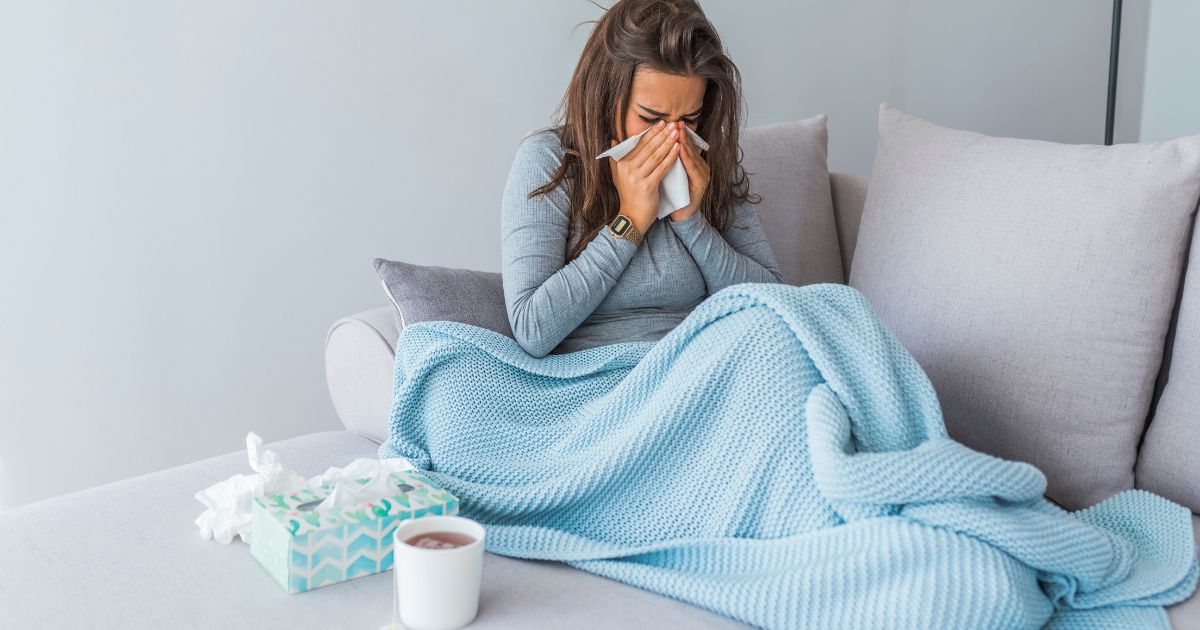In December, as temperatures drop and humidity increases in homes and apartments, problems associated with the presence of mold and dust mites often arise, which can lead to increased allergic reactions for some. On the other hand, those suffering from pollen allergies may find solace, as pollen levels are minimal. Allergies in the winter can be tricky because it's challenging to distinguish them from a common cold. In this article, we will learn how to recognize an allergy from a cold and what the typical symptoms of mold and dust mite allergies are.

Most Common Allergies in December
For pollen allergies, December is a calm period, but dust mites and mold may become bothersome as people heat their homes more, leading to higher humidity in some households. Additionally, as we spend much more time indoors during the colder months, people may experience more allergies to dust mites and mold.

Dust Mite Allergy
Typical symptoms of dust mite allergy include:
- Sneezing,
- red eyes,
- stuffy or runny nose,
- itching in the nose, eyes, or throat,
- dry cough.
These symptoms often worsen at night because dust mites prefer the warm and dark environment of our beds.
Tip: Dust Mites: Everything You Need to Know.
How to Defend Against Dust Mite Allergy
The most effective protection against dust mites is through mite-proof bedding, such as pillows, blankets, covers, and sheets. Regular cleaning and air purification using air purifiers with HEPA filters are also essential.
Mold Allergy
Symptoms of mold allergy may be similar to those of dust mite allergies. If you notice that your symptoms worsen at home or in a damp environment, it may be a sign of mold allergy.

What to Do for Mold Allergy
Mold must be not only mechanically removed but also prevented from spreading further. Various air dehumidifiers and ozone generators serve this purpose. Additionally, it is crucial to maintain a dry environment at home, ventilate, and ensure an adequate supply of fresh air.
Preventing Allergic Reactions in December
For the prevention and treatment of allergies, it is important to follow several basic rules:
- Regular cleaning and dusting to control dust,
- use of air purifiers and dehumidifiers,
- ventilate several times a day,
- limit contact with allergens,
- in case of difficulties, consult a doctor and take prescribed medications.
In more severe cases, immunotherapy may be necessary to help the body tolerate allergens better.
#produkty#https://www.nanospace.store/anti-dust-mite-linen-with-nanofiber/?order=bestseller
Tip: Dust Allergy: Symptoms and Solutions.
Learn More About Allergies:
- How to Recognize Allergies
- Dust Mite Allergies
- Feather Allergies
- Dust Allergies
- Identifying and Managing Allergies in Infants and Children
- Combined or Cross-Reactive Allergies
- Pollen Calendar
- How to Prepare for Allergy Season
FAQ - Most Common Questions
What are the most common allergies in December?
The most common allergies in December are dust mite allergies and mold allergies.
How to distinguish an allergy in December from a cold?
Although symptoms of a typical cold and allergic reactions may seem very similar, there are several distinguishing signs to keep in mind in December. For example, allergic symptoms often escalate with prolonged indoor stays. Specifically, with dust mite allergies, issues like eye itching or a stuffy nose may be most intense during nighttime or right after waking up.
Unlike viral infections, improvements are usually not seen after using common cold remedies for allergies, and importantly, allergies generally do not come with fever. It is also common for allergic rhinitis to be mistaken for cold symptoms. However, if the runny nose persists for more than ten days, it's time to consider the possibility of an allergic reaction and consult a doctor.
Sources
- Arlian LG, A. A. (n.d.). Lowering humidity in homes reduces dust mites and their allergens. J Allergy Clin Immunol, 99-104.
- Arlian LG, N. J.-M. (1999). Reducing relative humidity to control the house dust mite Dermatophagoides farinae. J Allergy Clin Immunol, 852-6.
- Ellingson AR, L. D. (1995). The prevalence of Dermatophagoides mite allergen in Colorado homes utilizing central evaporative coolers. Ann Allergy, 680-3.
- R Voorhorst, F. S. (1967). House dust mite atopy and the allergens it produces: identity with the house dust allergen. J Allergy, 325-329.
- RL Brandt, L. A. (1976). Mortality of house dust mites, Dermatophagoides farinae and D. pteronyssinus exposed to dehydrating conditions or selected pesticides. JMed Entomol, 327-352.
- Singh, M., & Jaiswal, N. (2013). Dehumidifiers for chronic asthma. Cochrane Database of Systematic Reviews, 1-25.
- Cheng L, Chen J, Fu Q, et al. Chinese Society of Allergy Guidelines for Diagnosis and Treatment of Allergic Rhinitis. Allergy Asthma Immunol Res. 2018;10(4):300-53.
- Sheehan WJ, Phipatanakul W. Indoor allergen exposure and asthma outcomes. Curr Opin Pediatr. 2016;28(6):772–7.
- Twaroch, T.E., Curin, M., Valenta, R. and Swoboda, I., 2015. Mold allergens in respiratory allergy: from structure to therapy. Allergy, asthma & immunology research, 7(3), pp.205-220.
- Bozek, A. and Pyrkosz, K., 2017. Immunotherapy of mold allergy: A review. Human vaccines & immunotherapeutics, 13(10), pp.2397-2401.
- Portnoy, J.M. and Jara, D., 2015. Mold allergy revisited. Annals of Allergy, Asthma & Immunology, 114(2), pp.83-89.
- Rudert, A. and Portnoy, J., 2017. Mold allergy: is it real and what do we do about it?. Expert Review of Clinical Immunology, 13(8), pp.823-835.

